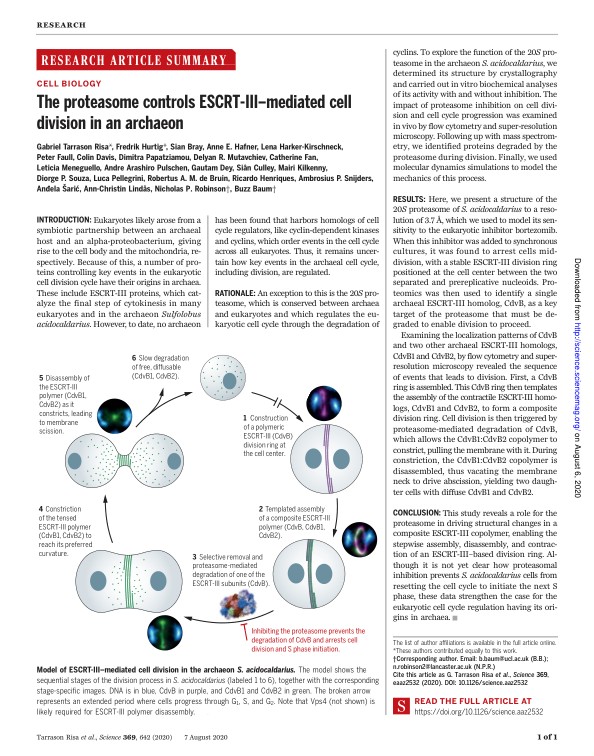The proteasome controls ESCRT-III–mediated cell division in an archaeon
Authors: Gabriel Tarrason Risa, Fredrik Hurtig, Sian Bray, Anne E. Hafner, Lena Harker-Kirschneck, Peter Faull, Colin Davis, Dimitra Papatziamou, Delyan R. Mutavchiev, Catherine Fan, Leticia Meneguello, Andre Arashiro Pulschen, Gautam Dey, Siân Culley, Mairi Kilkenny, Diorge P. Souza, Luca Pellegrini, Robertus A. M. de Bruin, Ricardo Henriques, Ambrosius P. Snijders, Anđela Šarić, Ann-Christin Lindås, Nicholas P. Robinson, Buzz Baum
Technologies: NanoJ () and NanoJ-SRRF ()
Paper published in Science, August 2020
Publisher: American Association for the Advancement of Science

Technologies: NanoJ () and NanoJ-SRRF ()
Paper published in Science, August 2020
Publisher: American Association for the Advancement of Science

In eukaryotes, proteasome-mediated degradation of cell cycle factors triggers mitotic exit, DNA segregation, and cytokinesis, a process that culminates in abscission dependent on the protein ESCRT-III. By studying cell division in an archaeal relative of eukaryotes, Tarrason Risa et al. identified a role for the proteasome in triggering cytokinesis by an archaeal ESCRT-III homolog. Cell division in this archaeon was driven by stepwise remodeling of a composite ESCRT-III–based division ring, where rapid proteasome-mediated degradation of one ESCRT-III subunit triggered the constriction of the remaining ESCRT-III–based copolymer. These data strengthen the case for the eukaryotic cell division machinery having its origins in Archaea.